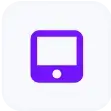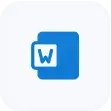Blog

Improve Your Operations With Microsoft Connections Office 365
Microsoft Office has been a household name as long as personal computers have existed. Their services have continued to expand and adapt as technology advancements happen. Microsoft continues to refine itself further to establish its place in the contemporary digital world.
You might see yourself as a seasoned Microsoft Connections Office 365 user. However, we are here to confirm that your Office 365 still has untapped capabilities waiting to be discovered. This is especially true in a time of integrating third-party applications – and third-party applications, such as scheduling software, have taken center stage in increasing the functionalities of the Microsoft suite.
This article delves into the different aspects of Microsoft Connections Office 365 while making a case for the integration of scheduling software. We will list the benefits and the necessary steps to make the most out of your Office 365. By the end, you’ll better understand how this synergistic approach will benefit your organizational processes.
All About Microsoft Integrations
First, let’s revamp your knowledge of the multi-faceted services under the Microsoft ecosystem. You may be familiar with most of them. Still, it would not hurt to be reminded of Microsoft’s versatile solutions again. But if you’re entirely new to any of these, you may treat this as a quick introduction and do further research as you please:
#1. What Is Microsoft Office 365?
Microsoft Office 365 is a cloud-based productivity platform. It provides applications, productivity tools, and collaborative features that enable users to do various tasks depending on their productivity app. The latest apps under the Microsoft suite include Microsoft Teams, Word, Excel, PowerPoint, Outlook, OneDrive, etc.
#2. What Is Outlook?
Microsoft Outlook serves primarily as an email and calendar service. While it is proven excellent in email and schedule management, it also allows storing contact names and handling tasks. It is a widely-used email client that allows for seamless integration to any Microsoft app – as any user of Outlook trying to connect to Office 365 can attest.
#3. What Is Myapps Office 365?
My Apps is a web-based portal that allows users to launch and manage all the apps they use. It features a single sign-on and lets users view the apps the admin has given them access to. My appsOffice 365 may then be used to manage third-party applications’ integration and their different access levels.
It is essential for you to get acquainted with these components as they form part of Microsoft’s interconnected suite of tools that have long cemented its place as the cloud-based productivity platform people go for.
What Is Scheduling Software?
Scheduling software is a cloud-based solution or local application that automates different types of scheduling processes, such as desk and room booking, project scheduling, and facility reservations.
Any scheduling software may usually offer built-in features such as booking, calendar management, automated notifications, and even collaboration tools for organizational members.
Further, some scheduling software is compatible with mobile devices, which allows for accessibility on the go. This makes their integration to Microsoft connections Office 365 desirable, resulting in a cohesive environment for managing appointments and resources.
Why Do You Need a Scheduling System?
If it still needs to be obvious, integrating scheduling software with your MyApp Office 365 enhances overall efficiency. Time spent switching between different applications is drastically cut back as planning, scheduling, and reserving may be done in one screen interface.
How To Get the Most Out of Office 365
As service users, we will never say no to maximizing the most that we can get from the services we paid for. This is achievable with Microsoft Office 365, as it offers tools and APIs that allow for the integration of third-party applications. Now, we can maximize the functionalities of our Office 365 and gain a fresh perspective on the Microsoft experience through their integration.
Integrating Microsoft Office 365 with any room reservation software can amplify the user experience of your office team. Most organizations perform their daily tasks with the aid of productivity tools and other social platforms. Scheduling software will transform your operations by streamlining your digital and physical operations through facility management.
Here are some of the steps that you may take to achieve this integration:
1. Choose Your Scheduling Software. Not all scheduling software is built the same. When selecting one, compatibility should be at the top of your concerns. As such, go for a scheduling software provider that is intentional in its integration options or compatibility with Office 365. A scheduling software with out-of-the-box connectors will allow easy data integration with external applications, including the Microsoft 365 app.
2. Configure Your Office 365 Account. Ensure that your Microsoft 365 app account has been correctly set up. Admin-level authorization may be required before any third-party app may be integrated.
3. Configure Your Scheduling Software. Your chosen scheduling software provider will have specific setup instructions for integrating with Office 365. This typically includes the authentication process, data synchronization, and registration to the Microsoft Entra ID.
4. Calendar Integration. Microsoft Outlook, which provides for the Outlook calendar, may be configured to sync event details to your scheduling software. Your integrated scheduling software allows users to collaborate and plan an event using Outlook in a one-screen interface.
5. Test and Validate. Your schedule software provider may offer a trial period for testing and ensuring everything works as it should. If available, take advantage of this trial period to validate whether the schedules, reservations, and updates are in sync and reflected accurately.
6. User Training. Even with their familiarity with the Microsoft 365 app, training is still required to operate the integrated scheduling software. Some schedule software providers may offer to facilitate the training needed to support your team members.
7. Maintenance and Updates. Regular upkeeping of the integration requires constant monitoring and updating. As the Microsoft Connections Office 365 and your integrated scheduling software (if cloud-based) will both receive updates and improvements, you can ensure their continued compatibility by being proactive on their regular maintenance.
Note that these steps may vary depending on the scheduling software you choose. The best move is always to do your research and reach out to consult a provider for detailed guidance.
What Are the Benefits of Scheduling Software Integration?
Organizational efficiency lies in the success of getting things done while exerting only the minimum effort required. Scheduling software may provide all-in-one solutions such as office hoteling, desk booking, meeting reservations, and project scheduling.
Hence, by integrating your Office 365 with scheduling software, your organization can guarantee:
#1. Efficient Resource Management
Facilities, time, and people all rank in equal importance as resources for any organization. It may seem too good to be true, but scheduling software may effectively manage all of these resources. And the best thing is this may be done without alienating your team members from the familiarity of the Office 365 environment.
#2. Real-Time Updates
Any room reservation, office desk booking, or project designation changes can instantly be reflected in your calendaring apps such as Microsoft Outlook. The capacity for real-time updates eliminates any risk of manual error or conflict of schedules.
#3. Centralized Information
Your team members can access any relevant information from the scheduling software integrated with the Office 365 service. Scheduling and task management are bound to get more accessible for everyone involved as all of the scheduling may be done without the need to switch between applications.
#4. Amplified Productivity
Integrating scheduling software with Office 365 provides an improved unified platform. Look at it this way: any team member can create meetings, invite participants, reserve rooms, and access documents, all in a series of clicks. Your team then is bound to spend less time on administrative matters and more on accomplishing their tasks.
#5. Customized Collaboration
Planning and communication are taken to the next level with expanded collaboration. Your team may use the scheduling software integration to plan meetings and coordinate activities within Office 365. Collaboration may happen in real-time or asynchronously without friction.
#6. Notifications
The integration allows for automated notifications. These notifications are sent out to team members when a project is assigned, or a meeting is scheduled. This reduces the risk of missed team events while improving communication among team members and stakeholders.
#7. Enhanced Reporting and Analytics
A scheduling software integrated with Office 365 may provide valuable data and insights into how the productivity tools of an organization are used. Specific data on resource allocation – room utilization, project accomplishment time, booking trends – are readily available to improve your operations.
The Bottomline
It is a no-brainer that integrating scheduling software to Microsoft Connections Office 365 is the move forward. After all, this integration will allow your organization to streamline the management of its spaces, appointments, and projects – resulting in improved operational efficiency.




















































 Support
Support  Demo
Demo  Blog
Blog